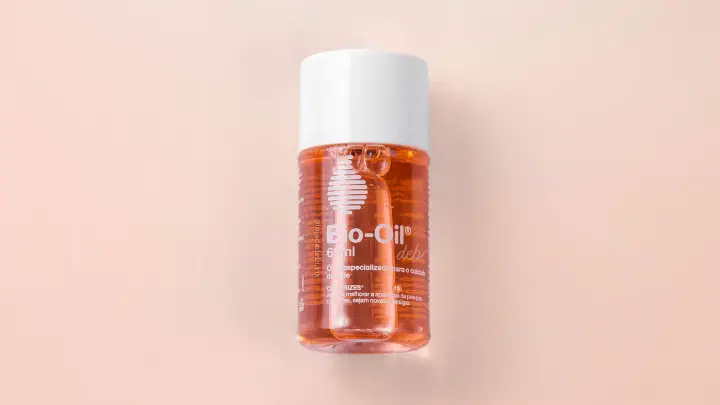Often, in the debate of glycolic acid vs salicylic acid, there is a consensus pause on which is best. More like agree to disagree scenario.
This debate keeps playing in little to big gatherings on what acid provides the best holistic solution to most skin concerns. However, what people fail to realize is that glycolic acid and salicylic acid are far apart from each other and very closely related.
Meanwhile, where there is a debate between the two, some confuse the acids for the other. Mixing up the acids and functions will likely put a dent in your skincare due to the varying functions and performance levels of the acids.
If you fall under the debate or confused categories, it’s time to get answers- glycolic acid vs salicylic acid, which is which?
What Is Glycolic Acid?
Glycolic acid belongs to the Alpha Hydroxy Acid (AHA) family. The acid is naturally found in sugarcane; however, it can be synthesized in a laboratory. The acid is a key skincare ingredient used in exfoliating and improving skin surfaces.
The acid is known for its tiny molecules that slip easily through the skin pores. Therefore, it works both on the surface of the skin and below.
Nonetheless, it particularly helps to improve overall pigmentation on the skin, slough off dead skin cells, and improve the growth of new ones.
The acid is gentle on the skin. It also helps to reduce skin inflammation and bacteria causing acne on the skin. Consequently, glycolic acid is an efficient exfoliating, hydrating, and skin surface-changing acid.
What Is Salicylic Acid?
Salicylic acid is a Beta Hydroxy Acid (BHA) naturally occurring in plant parts like wintergreen leaves and willow barks. However, it can be synthesized in a laboratory. This acid also has exfoliating properties that help to slough off dead skin cells.
The acid helps to reduce acne on the skin by gently peeling off dead skin from the surface. It works by minimizing the appearance of your skin pores and regulating sebum production. Also, the acid is a tiny molecule, which allows it to penetrate the skin deeper.
Salicylic acid is also known to treat skin hyperpigmentation by removing old skin cells at the surface of the skin, allowing new and clear skin.
Glycolic Acid vs Salicylic Acid
Glycolic acid and salicylic acid are both exfoliating acids key in skincare products. However, they are different in some ways. Here are the differences between glycolic acid and salicylic acid.
1. Solubility
These acids have different solvents. Glycolic acid is water-soluble. Meanwhile, salicylic acid is fat-soluble.
Other solvents that can dissolve glycolic acid include acetic acid, acetone, alcohol, and ethyl acetate. These solvents let the ions dissociate in the glycolic acid work. Furthermore, water reduces the irritating effect of glycolic acid.
On the other hand, salicylic acid is oil- or fat-soluble.
The BHA can however be dissolved in ethanol, methanol, ethyl acetate, and polyethylene glycol. However, oils like jojoba, argan oil, and grapeseed oil are great solvents. Moreover, they are non-comedogenic and penetrate the pores with ease.
2. Different methods of exfoliating
Glycolic acid works from the inside out in clearing dead skin cells from the skin. The acid contains hydrating properties that boost the skin from deep within.
Meanwhile, salicylic acid works from the outside. The acid exfoliates the skin by removing dead skin cells, reducing oil, and unclogging pores. This is why it is great for acne treatment.
3. Skin type
When it comes to skin type, glycolic acid is more generalized than salicylic acid. The acid treats from simple skin hydration to mild hyperpigmentation to wrinkles and fine lines.
Salicylic acid, meanwhile, suits acne-prone, oily, and combination skin because it especially reduces breakouts, blackheads, spots, and blemishes on the skin.
Glycolic Acid vs Salicylic Acid vs Retinol
These active ingredients work on the skin to varying degrees and depending on the concern. For instance, glycolic acid and salicylic acid work better in exfoliating the skin. Meanwhile, retinol is a weak ingredient for exfoliating.
When it comes to controlling sebum on the skin, salicylic acid is the best product. However, retinol works best in treating acne.
This, however, depends on the concentration. With OTC products, salicylic acid does a better job at reducing acne than retinol. Whereas, prescribed retinol works better than salicylic acid.
When it comes to anti-aging benefits, retinol is your chosen ingredient. It helps to reduce fine lines, wrinkles, and age spots. Glycolic acid comes closer next to salicylic acid.
Glycolic Acid vs Salicylic Acid vs Hyaluronic Acid
These acids are all-natural occurring acids in plants and the body. However, hyaluronic acid is a versatile acid that rarely irritates the skin. In addition, it is suitable for all skin types.
While glycolic acid is also suitable for most skin types, salicylic acid works best for oily, combination, and acne-prone skin.
When it comes to hydration, hyaluronic acid is the top choice. It’s better than glycolic acid in treating dryness.
However, for anti-aging benefits, glycolic acid helps to reduce signs of aging. For sebum controlling and hyperpigmentation, salicylic acid is the best of the acids.
Glycolic Acid vs Salicylic Acid for Hyperpigmentation
Salicylic acid.
Both acids treat hyperpigmentation but on a different levels. Glycolic acid hydrates and brightens the skin, improving your overall skin glow. However, it does not leave a big difference.
On the other hand, salicylic acid helps to remove skin hyperpigmentation by sloughing off dead skin cells from outside to inside. When new skin resurfaces, the pigmented parts become lighter.
Therefore, if you are picking an acid for hyperpigmentation, pick a product with salicylic acid than glycolic acid, or better, layer products with the acids.
Glycolic Acid vs Salicylic Acid for Acne
Salicylic Acid.
Salicylic acid helps to treat acne more than glycolic acid. The acid helps to reduce sebum and control the appearance of pores. Furthermore, it clears your pores or residual oil, bacteria, and dead skin cells.
Meanwhile, glycolic acid does exfoliate the skin, but it does so gently. It also helps to hydrate the skin but not enough to regulate sebum production in the skin.
Salicylic acid neutralizes acne-causing bacteria on the face, preventing cystic acne from forming. This also reduces blackheads and whiteheads that pop on the skin. Therefore, salicylic acid is more beneficial to acne-prone skin than glycolic acid.
Glycolic Acid vs Salicylic Acid for Ingrown Hairs
Glycolic acid.
Exfoliation helps to reduce ingrown hairs. Both glycolic acid and salicylic acid exfoliate the skin. However, glycolic acid exfoliates the skin from the inside out, whereas salicylic acid exfoliates from the outside in.
Ingrown hairs are trapped hair in the skin. Therefore, to remove them, you need an agent that raises the ingrown hair from within. Consequently, glycolic acid is better at raising and removing ingrown hairs from your skin pores.
Can You Mix Glycolic Acid and Salicylic Acid Together?
No, you shouldn’t. Salicylic and glycolic acids are BHA and AHAs that work well but should be separate. You should avoid mixing glycolic acid and salicylic acid.
Mixing both acids could cause a compound reaction on your skin from slight irritation to redness and burning sensations. The acids are highly concentrated, therefore, a mixed AHA and BHA could affect your skin barrier.
The skin barrier could weaken due to the clashing of both acids on the skin. To avoid severe side effects, do not mix, but rather layer.
Frequently Asked Questions
Can you layer glycolic acid and salicylic acid?
Yes, you can. You can layer your glycolic acid and salicylic layer products in your skincare routine.
For example, your glycolic acid cleanser comes first, and then add a chemical exfoliator or toner with salicylic acid.
Can you use glycolic acid with vitamin C?
No, you can’t. Do not pair glycolic acid with vitamin C. The AHA does not mix or layer well with vitamin C.
Vitamin C has a lower pH level than glycolic acid. As a result, the unstable vitamin may leave the skin in need of hydration.
After adding glycolic acid to vitamin C, the acid seeks to neutralize vitamin C’s reduced pH level, rather than balance the skin, creating an imbalance. Consequently, it is best not to use the acid with vitamin C.
Do glycolic acid and salicylic acid have side effects?
Yes, they do. Glycolic and salicylic acids have side effects stemming from an incorrect application, highly concentrated, or a wrong match of your skin type.
You can experience little irritations from swelling to burning sensations if the acids are not suitable for your skin. As a result, be sure to patch test before using any product with the acids.
Conclusion
When it comes to AHA and BHA glycolic acid and salicylic acid, it gets confusing when you tag the ingredients as the same, when they are worlds apart. They are both exfoliating acids; however, salicylic acid helps oily and acne-prone skin types more than other skin types.
When it comes to picking your acid, you have to figure out what skin concern you want to treat. Glycolic acid soothes sensitive and dry skin more due to its gentle and hydrating process, while salicylic acid focuses on the other end of the spectrum- sebum control and cleansing.
When you identify what these acids do separately, you can spot the difference between the two, thereby making better decisions in organizing and layering your skincare products.
Thanks for reading.
Serum101 provides detailed answers to your skincare queries.







